The photovoltaic sector is experiencing considerable growth, highlighted by the constant search for improving the performance of solar installations. But the question often comes up regarding the performance and sustainability of such an installation. ASSO BDPV (non-profit association under the 1901 Law) has just published a study based on the analysis of 4,000 photovoltaic installations across France, which reveals essential insights for investors, owners, and professionals in the sector. This association, created to promote photovoltaics (on social networks, with public bodies, by disseminating data in OpenData, etc.) uses in particular the information from the site BDPV, a free website that I had already told you about, which allows photovoltaic owners to track their production over the years and compare it to similar installations. This data has thus made it possible to produce a very interesting infographic. Solar Panel Degradation Rate: A Key Indicator
In this study, the durability of solar panels is highlighted by their low annual efficiency degradation rate. The majority (90%) of the systems studied show an annual degradation of between 0 and 1%, while a small percentage (2%) exceed the threshold of 5% annual degradation. This implies that, in most cases, photovoltaic installations maintain high efficiency over time, thus ensuring a reliable return on investment.
Long-term perspectives
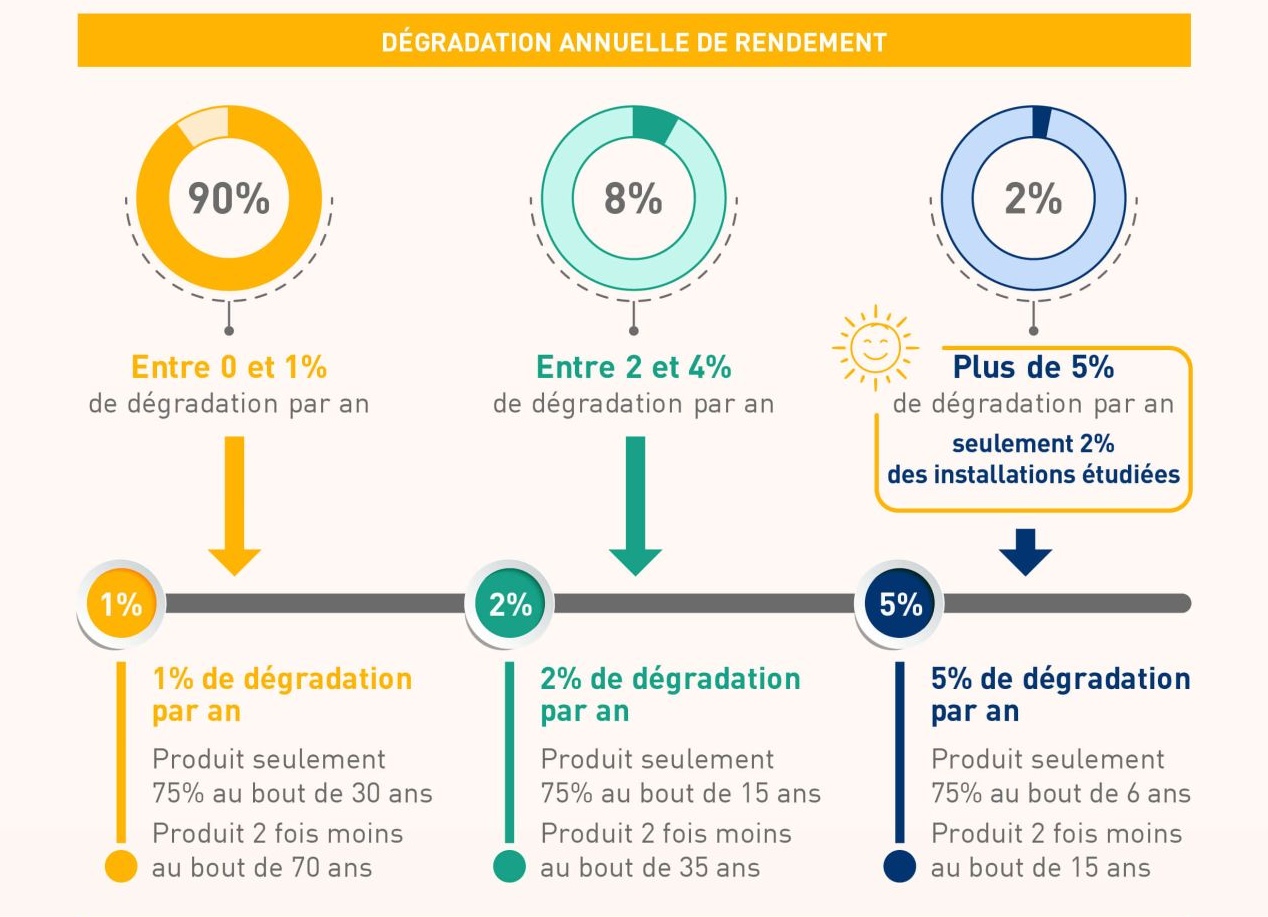
The study also reveals important data on the longevity of the panels:
90% of the panels analyzed, showing a degradation of 1% per year, remain productive at 75% after 30 years. This confirms the guarantee often put forward by manufacturers, of 80 to 85% efficiency after 25 years.
- Only 8% of the panels show a more significant degradation from 15 years (75% of production), and 2% from 6 years only.
- Overall, the production quality of the solar panels is therefore assured.
Reliability and continuity of production
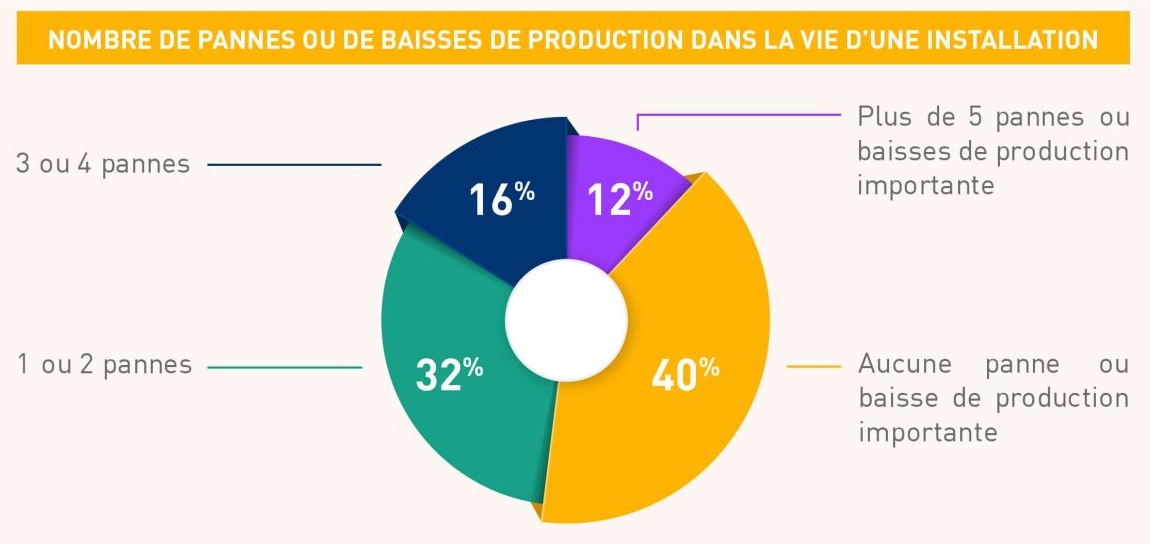
Concerning the continuity of production, the infographic indicates that:
40% of the installations have not experienced any breakdown or significant drop in production.
- 32% have had 1 or 2 breakdowns.
- Only 12% have suffered more than 5 breakdowns or significant drops in production.
- These statistics demonstrate a high general reliability of photovoltaic installations.
Diversity of production data
The source of the production data comes mainly from Linky meters (81%), followed by Enphase (12%) and other systems including SolarEdge (5%). This wide range of sources ensures diversity and richness in the collection of data, essential for precise and varied analyses.
Data volume: a wealth of information
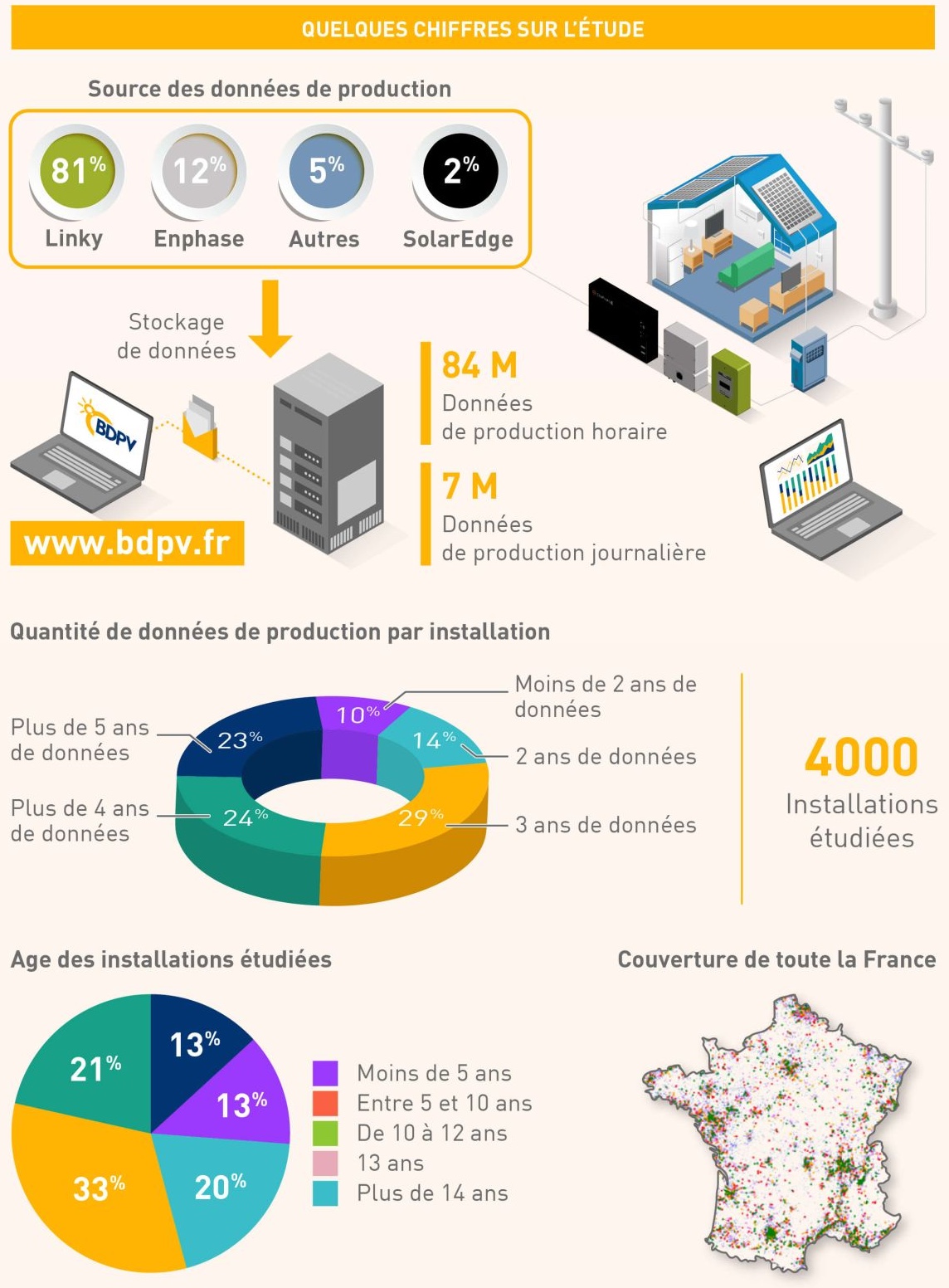
With 84 million hourly data and 7 million daily production data, the study presents a substantial set of data for performance analysis.
Plant configuration: a factor of complexity
It should be noted that the majority of plants (74%) consist of a single panel zone, while a minority present more complex configurations with several zones, thus illustrating the diversity of possible arrangements and their potential impact on performance.
Distribution of plant ages and national coverage

The age of photovoltaic plants is also a factor studied, distributed as follows:
33% of plants are less than 5 years old.
- 33% are between 5 and 10 years old.
- The remainder is distributed between plants from 10 to more than 14 years old.
- The coverage of the study extends over
the whole of France, thus offering a complete and representative perspective. ConclusionThis study reveals the efficiency and sustainability of photovoltaic installations in France. It offers reassuring prospects for industry players and environmentally conscious consumers. For more information, the source of the study, the BDPV association, etc. Visit the website
www.bdpv.fr
. Note the imminent release of the “Performance report of a photovoltaic installation”, based on an advanced digital simulation, which will determine whether an installation is at its maximum capacity, is deteriorating, has suffered breakdowns, etc. The result of the collaboration between ASSO BDPV and Yves-Marie Saint-Drenan, researcher at the O.I.E. MINES Paris – PSL Center, it is a valuable tool for monitoring the operation of your installation, comparing it to other installations in the BDPV database and identifying potential problems.To our knowledge, this is a world exclusive for small installations, which is based on the production history of each installation, on a history of satellite and meteorological observations, as well as on precise maps giving the height of obstacles around each installation. The tool uses the information provided during the precise annotation of the installation as well as the description of the installation contained in the BDPV database. These different sources of information guarantee the quality and robustness of the performance report. So don't hesitate to register on BDPV: it's free, it's very useful for monitoring your production, and it also helps promote photovoltaics in France!
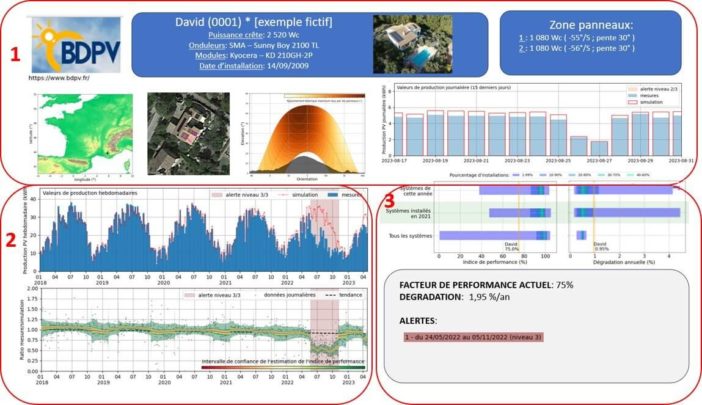

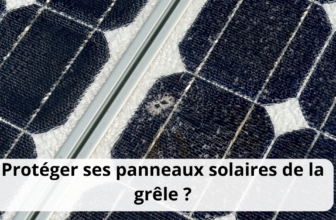
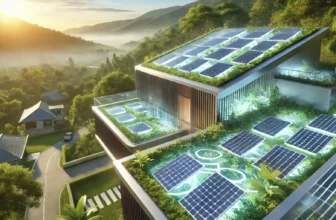

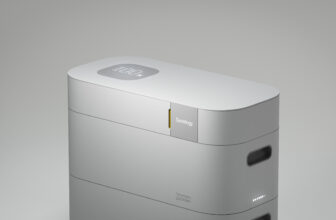

Please remain courteous: a hello and a thank you cost nothing! We're here to exchange ideas in a constructive way. Trolls will be deleted.